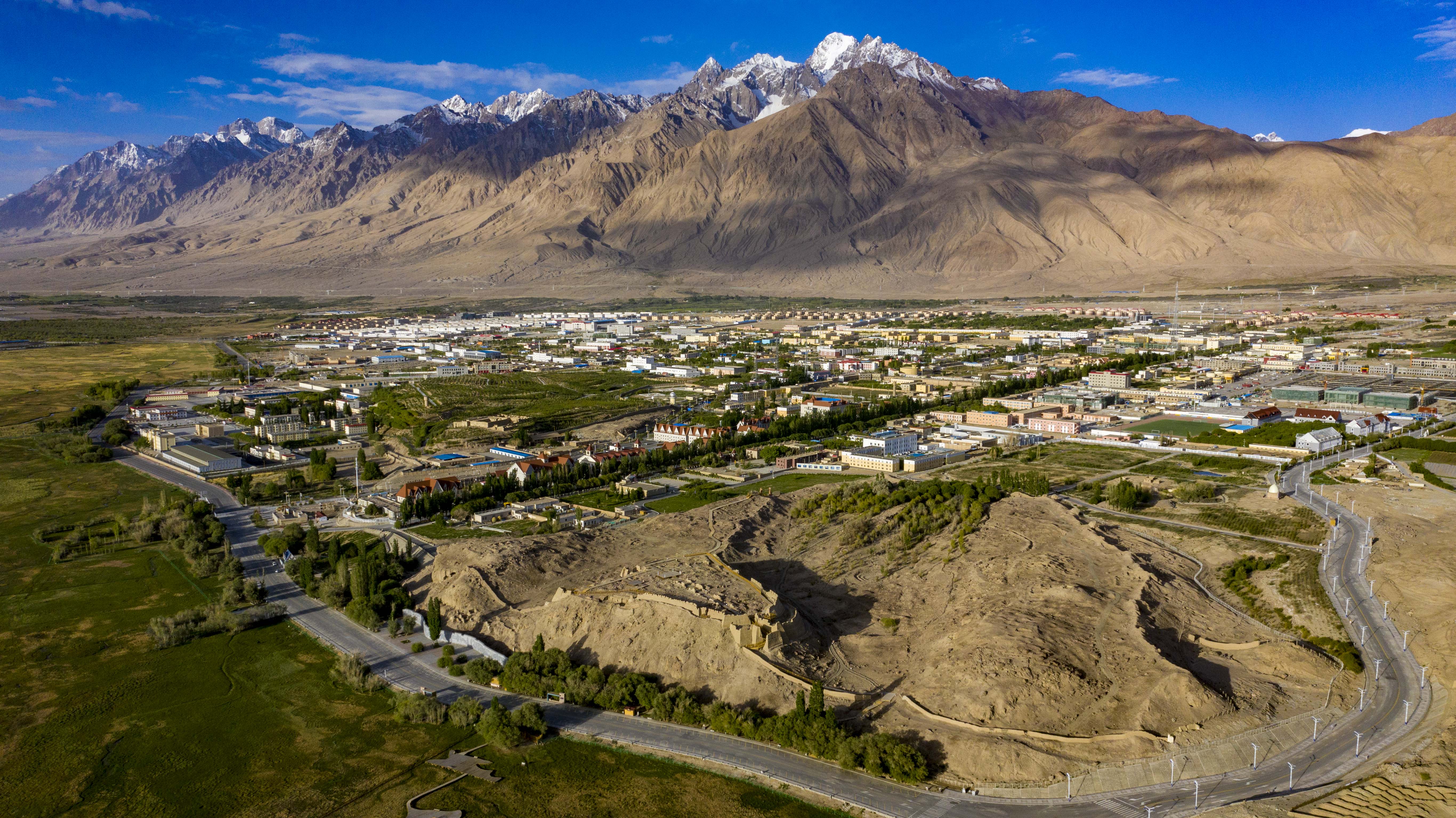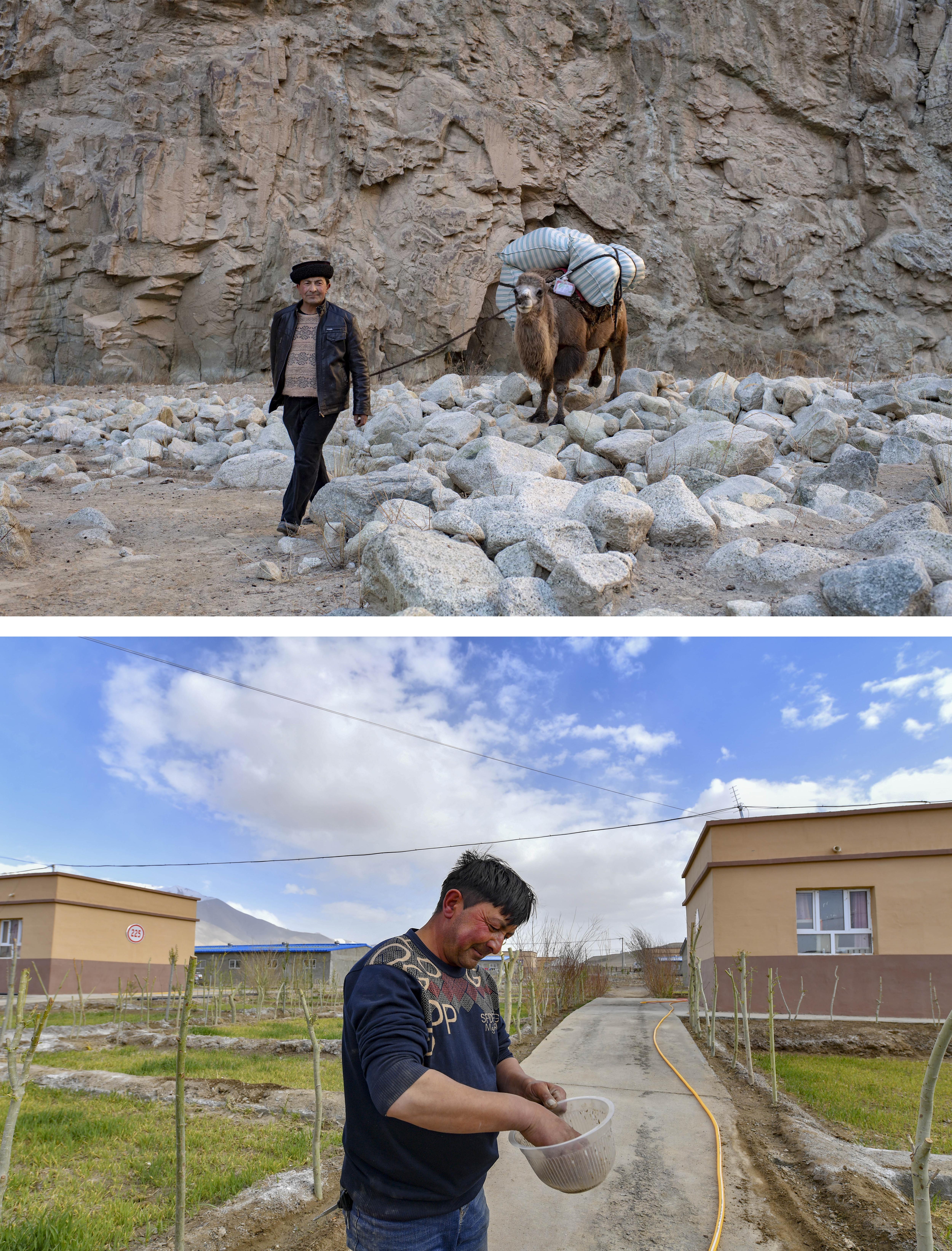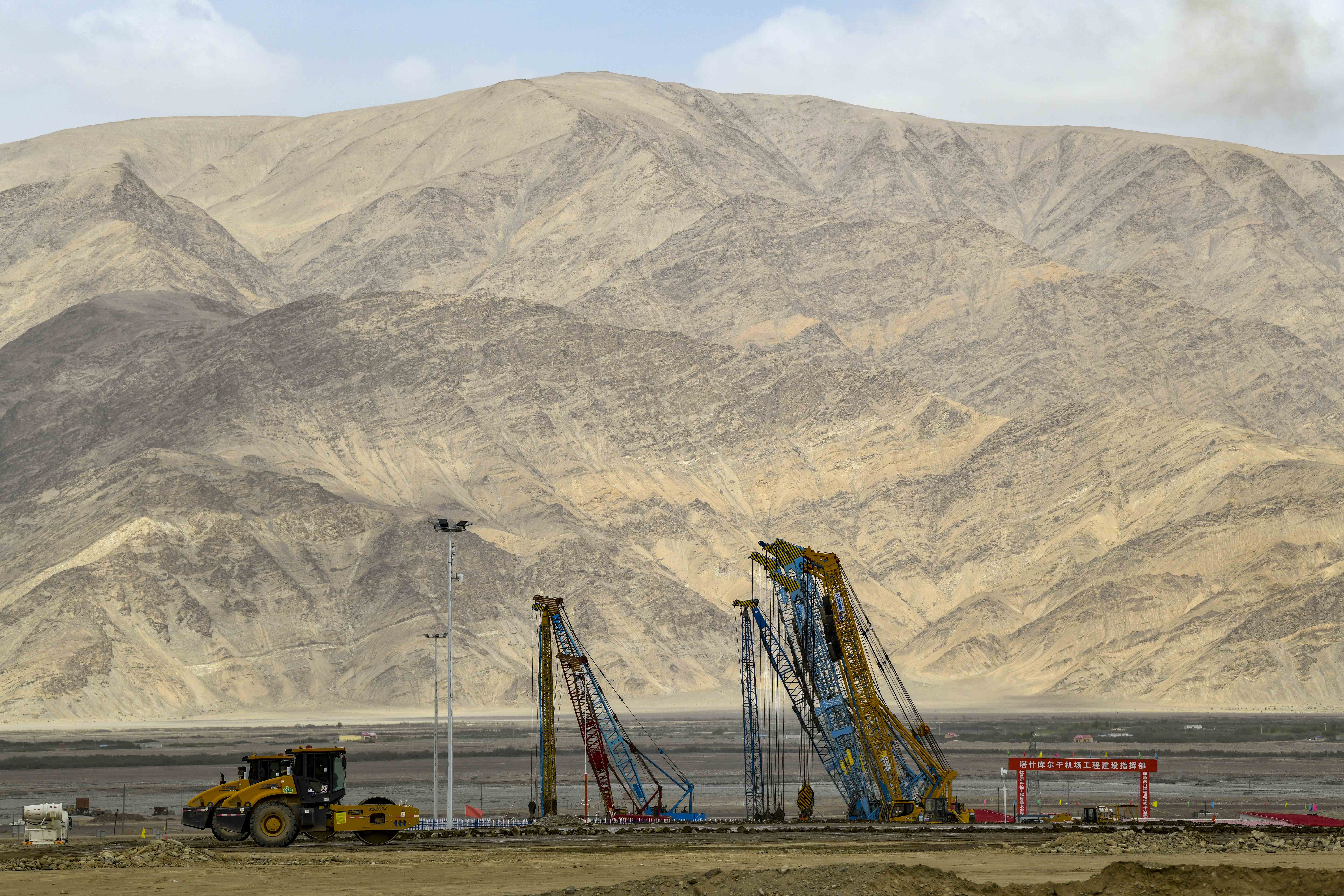China's ethnic Tajik people see life ascending on Pamir Plateau
At the intersection of the two main roads of Taxkorgan Tajik Autonomous County stands a landmark sculpture of a flying eagle. The eagle is one of the most revered totems for some 33,000 ethnic Tajik people living in the county in northwest China's Xinjiang Uygur Autonomous Region.
At the intersection of the two main roads of Taxkorgan Tajik Autonomous County stands a landmark sculpture of a flying eagle. The eagle is one of the most revered totems for some 33,000 ethnic Tajik people living in the county in northwest China's Xinjiang Uygur Autonomous Region.
Located on the Pamir Plateau, Taxkorgan is the only Tajik autonomous county in China, with more than 80 percent of its roughly 41,000 residents belonging to the Tajik ethnic group.

Aerial photo taken on June 10, 2020 shows a view of Taxkorgan Tajik Autonomous County, northwest China's Xinjiang Uygur Autonomous Region. [Photo/Xinhua]
China has vowed to leave no ethnic group behind in ending poverty and achieving a moderately prosperous society in all respects. The once impoverished county managed to get out from the doldrums of poverty last year and is making strides toward an all-round prosperous society.
Mountain trap
Ethnic Tajik people living in Taxkorgan are known as the "eagles of the high mountains," but it was never easy to be a free-flying eagle on the Pamir Plateau.
Taxkorgan, with an average altitude of more than 4,000 meters above sea level, is located among a cluster of mountains.
For local residents, mountains posed challenges for their daily life and work. There were no roads in many villages and the existing small trails could be easily destroyed by floods or mudslides.
In Rasekam, the remotest village in the county, villagers previously lived in 12 gullies. It would take about a month for Dawut Uxur, former Party chief of the village, to finish visiting all the villagers by horse, yak or camel. A trip to the county, more than 200 km away, would take five days.

Combination photo shows one of the gullies where residents of Rasekam Village used to live (top, photo taken with a drone on July 8, 2019) and a resettlement community for relocated residents of Rasekam Village in Taxkorgan Tajik Autonomous County (bottom, photo taken with a drone on June 6, 2020), northwest China's Xinjiang Uygur Autonomous Region. [Photo/Xinhua]
"Some aged villagers had never ventured beyond their village. It's just mountains everywhere," said Dawut, 66.
The mountainous landscape also made it difficult to access electricity, tap water and communication signals. Dawut had never watched TV until 2017.
Breaking new ground
However, the mountains failed to dampen China's determination to lift people of all ethnic groups and all corners of the country out of poverty. Infrastructure development has kept breaking new ground, making life easier and better for everyone.
After living in the mountains about 180 km away from the county seat for 47 years, Dure Jarman, 49, a villager in Datong Town, finally could live without having to worry about earthquakes.
A 5.5-magnitude earthquake jolted Taxkorgan in 2017, damaging more than 3,000 shabby houses made of earth and rocks.
New houses were built with support from the central and local governments, and many were relocated to places more suitable for living and work.
Dure's 80-square-meter house is just about 25 km away from the county seat. It was equipped with home appliances like a washing machine, a gas stove and a cooker. The house also came with a shed and a yard.

Combo photo shows Dure Jarman, a villager in Datong Town, walking with a pack camel in a gully in Taxkorgan Tajik Autonomous County, northwest China's Xinjiang Uygur Autonomous Region (top, photo taken on Nov. 17, 2018); and Dure sowing crop seeds after relocating to a resettlement community in Taxkorgan (bottom, photo taken on June 3, 2020). [Photo/Xinhua]
For those who chose to stay in the mountains, life is also different. The road between the county seat and the town was improved in 2018, slashing the travel time by half to about four hours. Stable electricity will replace power generated by photovoltaic panels and a small hydropower station to reach all the villages in Datong by the end of June, as wires are making their way into valleys.
"It's no longer just mountains. We feel connected with the rest of the world," said Dure.
Aiming high
Renovated houses and improved infrastructure are just the beginning of the Tajik people's journey to a well-off life.
Warxidi Village sits close to several popular tourist sites in Taxkorgan. Maynurgul Ikmu, 30, was not aware of the fact that they lived near a cash cow until 2015 when a tourist service center was established about 1 km away.
Taxkorgan has seen a growing number of visitors drawn by the county's snow-capped mountains, verdant grassland and Tajik festivities such as the eagle dance and polo.
Many travelers also visited Maynurgul's house to have a taste of traditional milk tea and Tajik culture. In 2016, Maynurgul built a family inn to house tourists with the encouragement and support of the local government.

Maynurgul Ikmu prepares accommodation for homestay lodgers at her family hotel in Taxkorgan Tajik Autonomous County, northwest China's Xinjiang Uygur Autonomous Region, June 4, 2020. [Photo/Xinhua]
She has learned to cook new dishes to cater to visitors' diverse tastes, and performs the traditional Tajik eagle dance for tourists and sells hand-made Tajik souvenirs.
Her family raked in more than 150,000 yuan (about 21,191 U.S. dollars) last year, and bought a car in January.
"It's the happiest thing for me in recent years," she said.
More than 1.1 million trips were made to Taxkorgan in 2019, bringing in more than 1 billion yuan in tourism revenue. The county made it onto the top national tourist destination list in late 2019.
Taxkorgan has made plateau plant cultivation, plateau herding, tourism and border trade as its pillar industries to lead its sustainable growth, with tourism as the major focus, according to county mayor Guluzar Aburahman.
In April, construction began on Taxkorgan Airport, expected to be the highest-altitude airport in Xinjiang. It is expected to improve transportation and boost the county's tourism market once put into operation. The airport will be completed before June 2022.

Photo taken on June 3, 2020 shows the construction site of the Taxkorgan Airport in Taxkorgan Tajik Autonomous County, northwest China's Xinjiang Uygur Autonomous Region. [Photo/Xinhua]
"Taxkorgan's economy will soon take off. The sky, rather than the mountains, will be the limit for our pursuit of a better life," said Guluzar.

